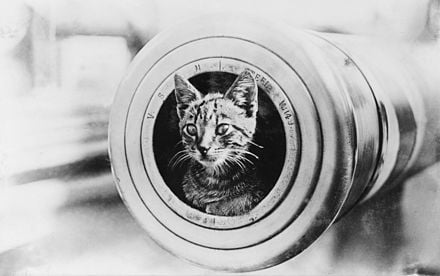Since ancient times, sailors have traversed the open ocean for fishing, trading, and exploration. Because these early mariners faced many dangers and uncertainties, they relied on superstitions, omens, and luck to keep them safe and guide them home. Sailors’ superstitions provided them with a sense of control as they navigated the unpredictability of the seas. But did you know why they always keep cats aboard?
Keeping cats on ships has long been a seafaring tradition as a form of pest control and the rumored good luck they brought to boats. Cats are thought to have spread throughout the world thanks to the Ancient Egyptians and Vikings.
Cats Aboard Ships
For many centuries, sailors have had a reputation for being superstitious. When they couldn’t predict how the weather would behave on your challenging journey ahead, they would use whatever means were at their disposal to try to figure it out. One of the reasons cats were chosen to travel aboard these ancient vessels was their sensitivity to weather changes.
Cats were also thought to bring good luck for the voyage. In addition, they protect food stores and reduce the possibility of disease by catching rodents. They were treated as crew members, with their own rations, living quarters, and sleeping space.
The crew would become very familiar with their behavior, and they would take it very seriously if they began acting out of character. If a cat attempted to jump overboard or repeatedly pawed at its face, it knew bad weather was coming and the crew would take preventive measures. If they were docked and a nursing cat started carrying her kittens ashore, it was considered a bad omen, and some seamen would refuse to sail. As a result, sailors ensured that their ship’s cats were well-fed and content. Fisherwives would sometimes keep black cats at home to protect their husbands while they were at sea.
Many centuries ago, sailors believed that a cat’s tail twitching could cause a storm, but later sailors realized that the tail twitching was not the cause of the bad weather but rather a warning that it was on its way.
While these sailors’ superstitions may appear absurd, they have some basis in reality. Cats can really detect changes in weather more acutely than other animals due to their sensitive inner ears. Cats can see the low atmospheric pressure that often precedes storms at sea, which can cause them to become restless or nervous. (Source: Formula Boats)
The History of Cats on Boats
The African wildcat was most likely domesticated in the Fertile Crescent during the first agricultural revolution, around 10,000 years ago. Small cat bones discovered on Mediterranean islands suggest that cats were introduced around the turn of the millennium.
Ancient Egyptian cats began spreading along Mediterranean trading routes in the 8th century BCE and reached a Viking port on the Baltic Sea by the 7th century. According to mitochondrial DNA analysis of archaeological cat specimens. During the Age of Discovery, which lasted from the 15th to the 18th centuries, explorers and traders transported much of the rest of the world onboard their ships. (Source: Formula Boats)
